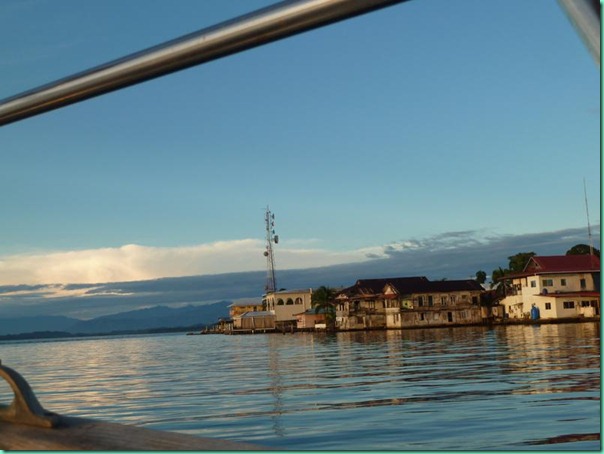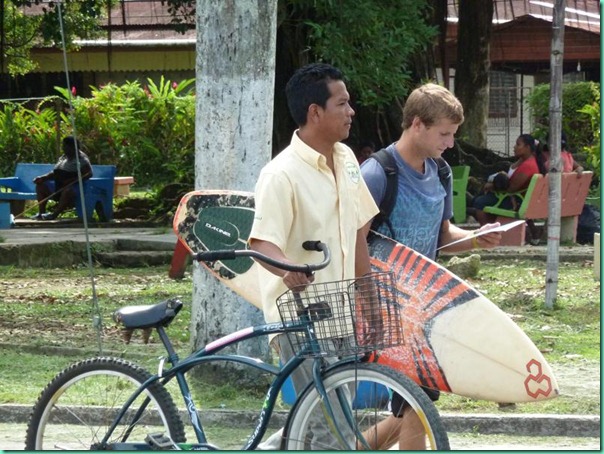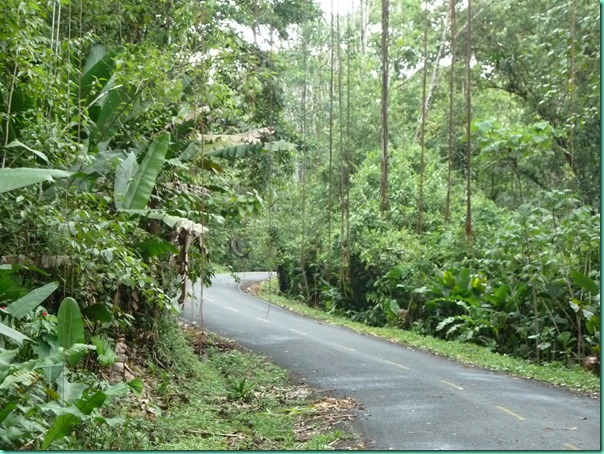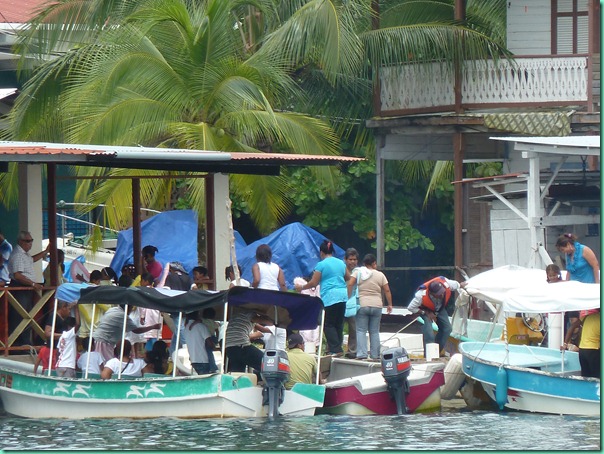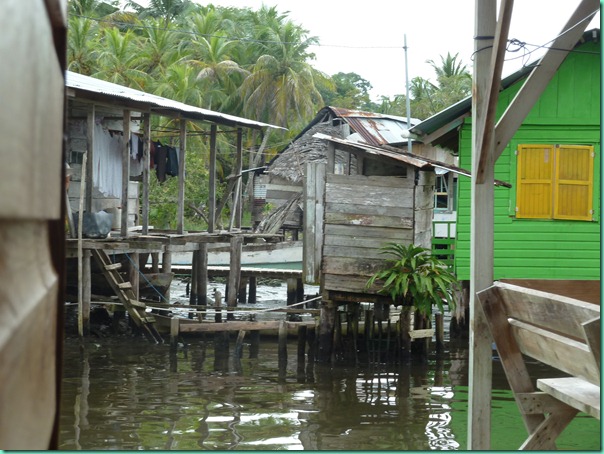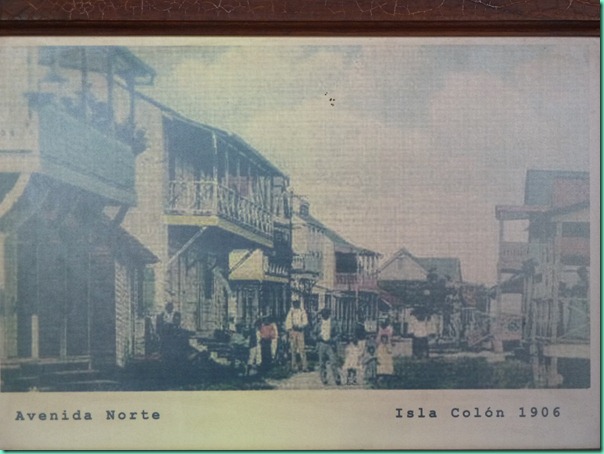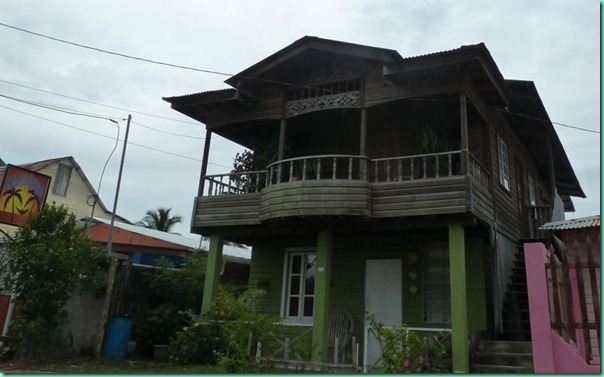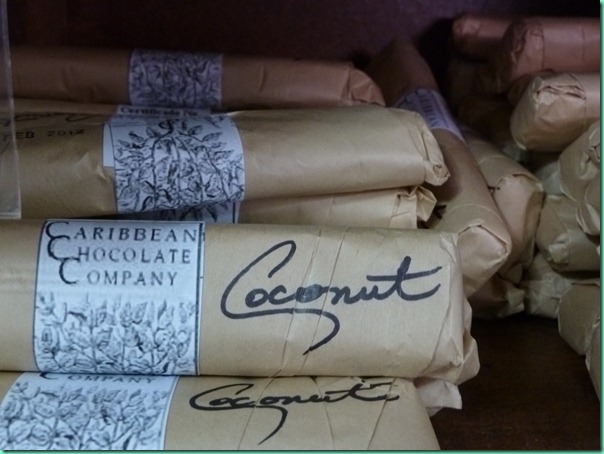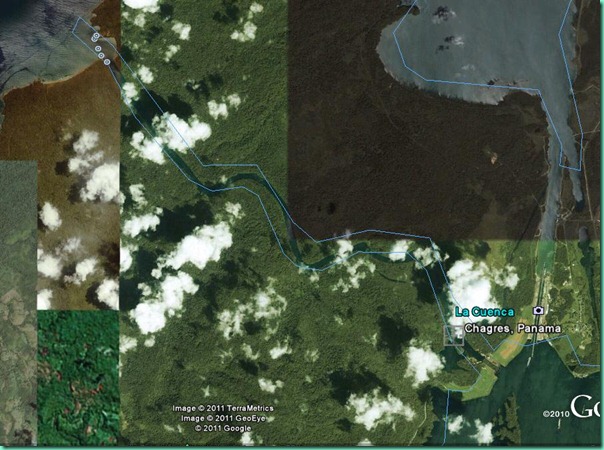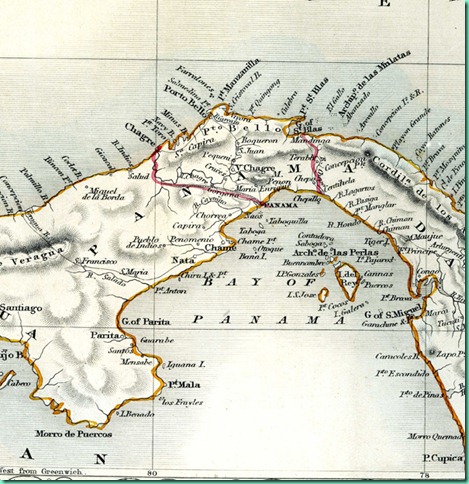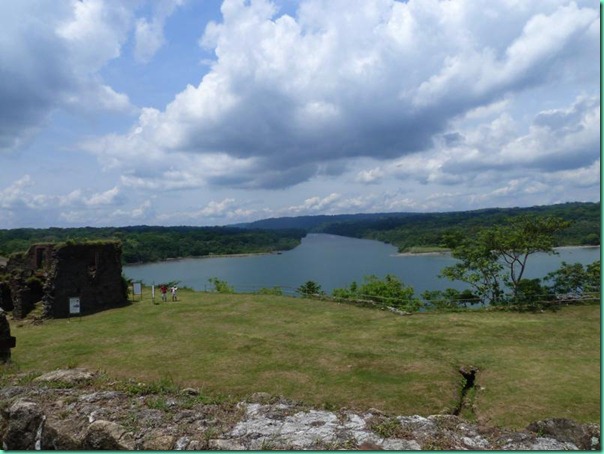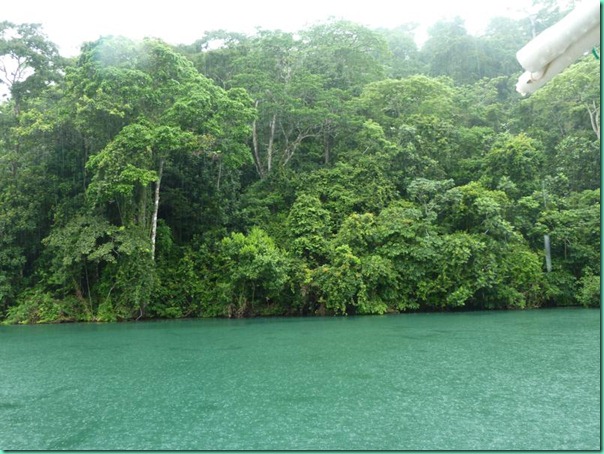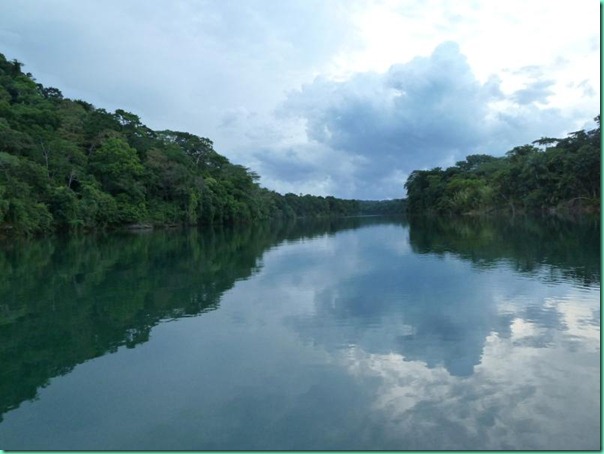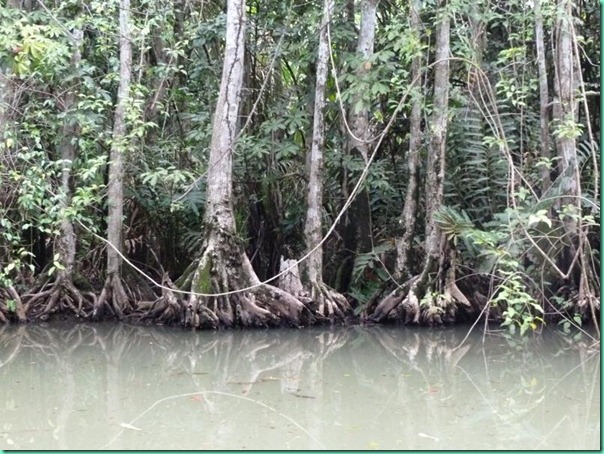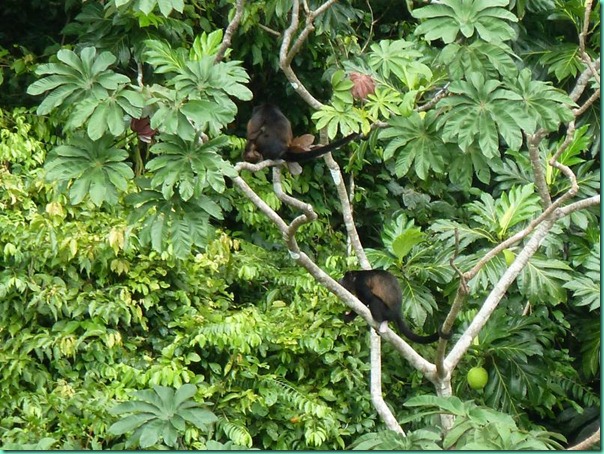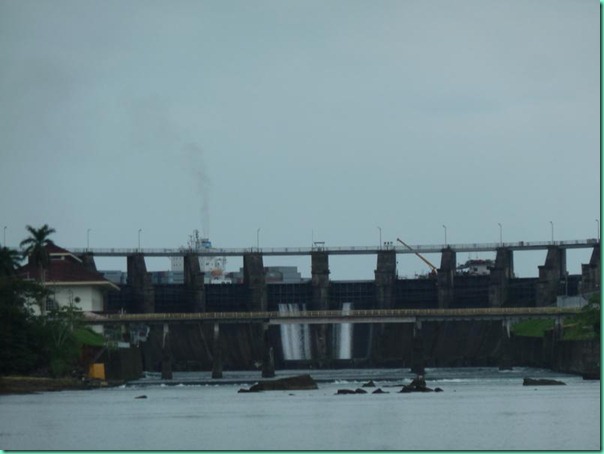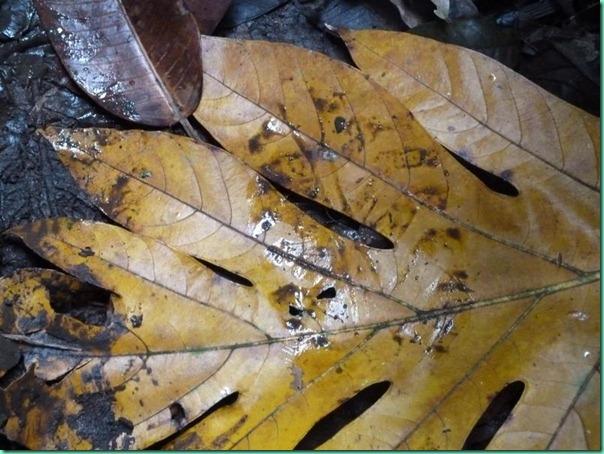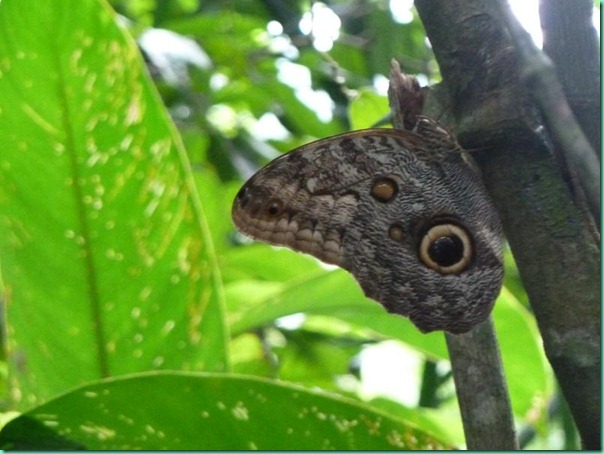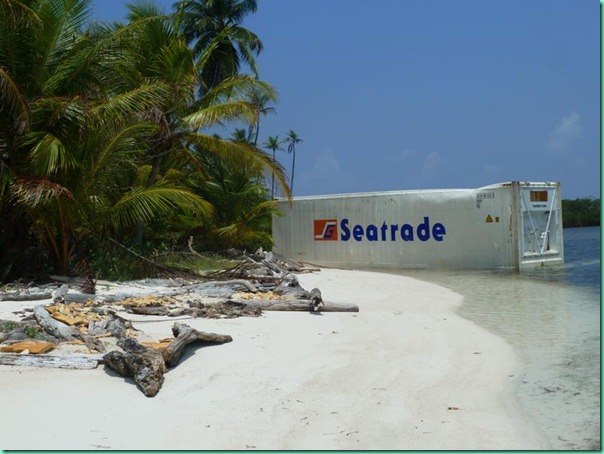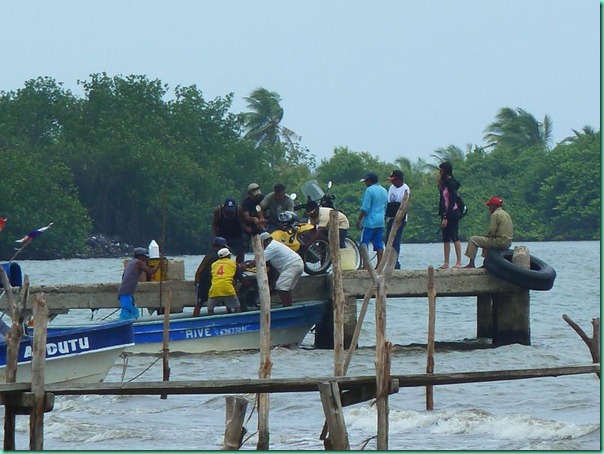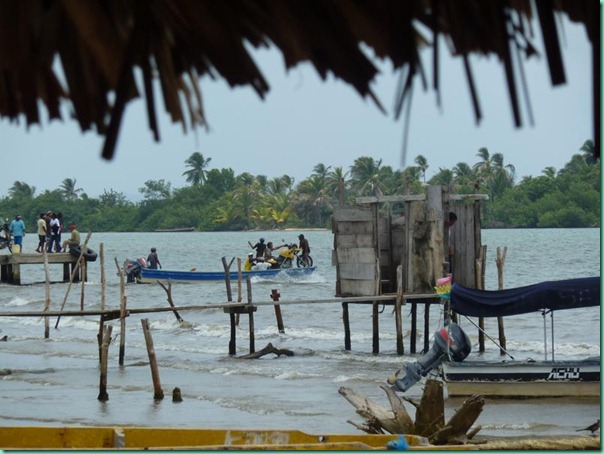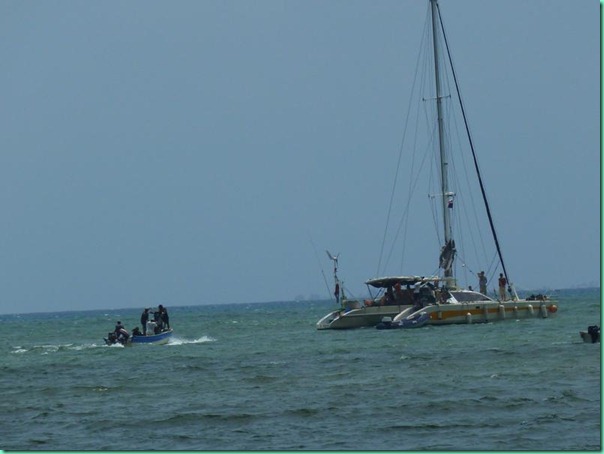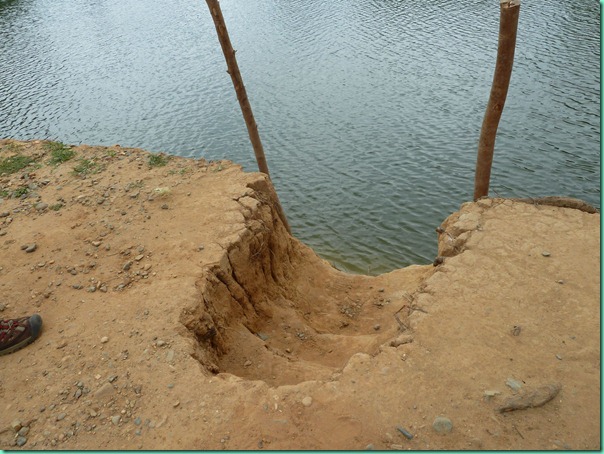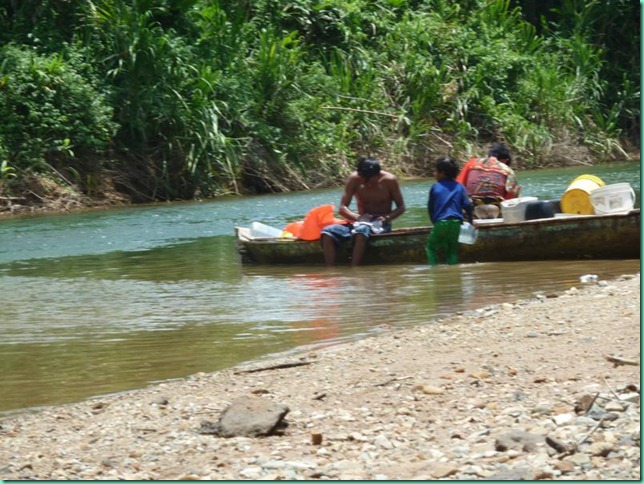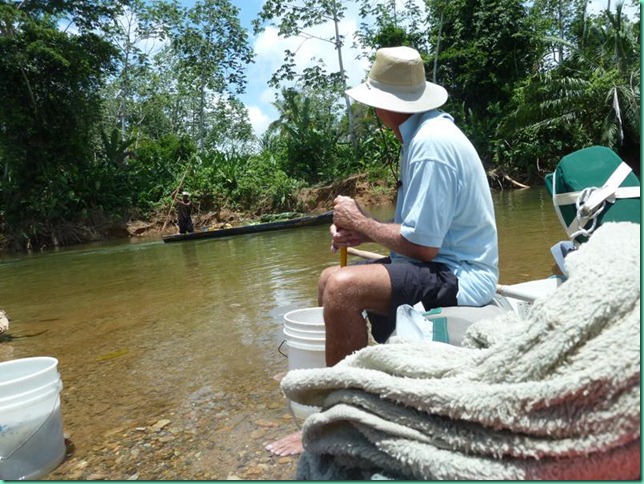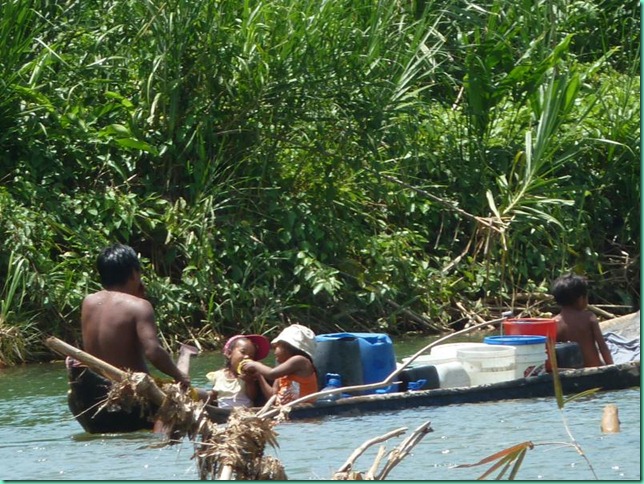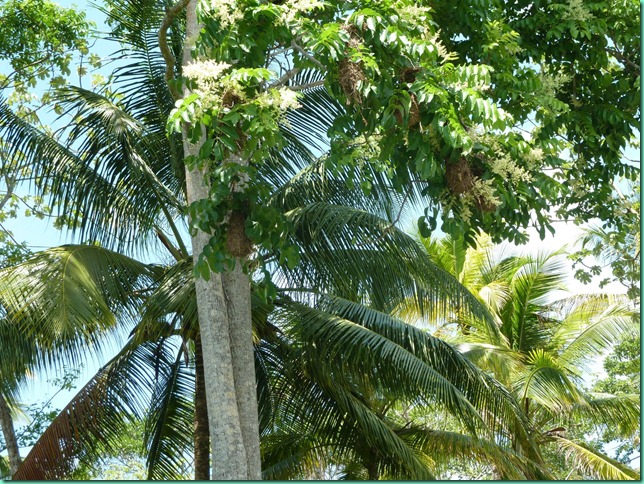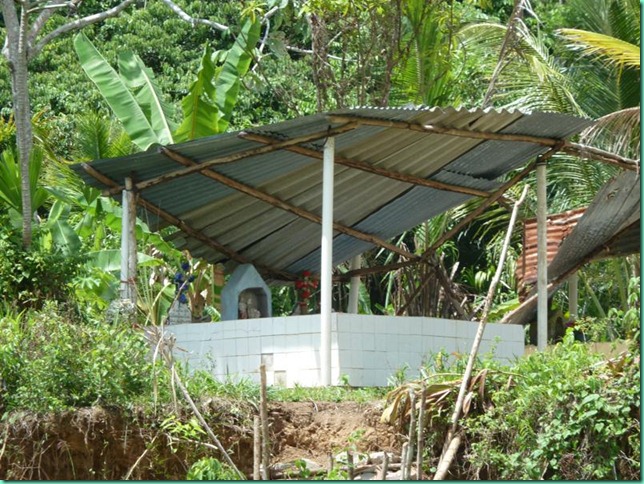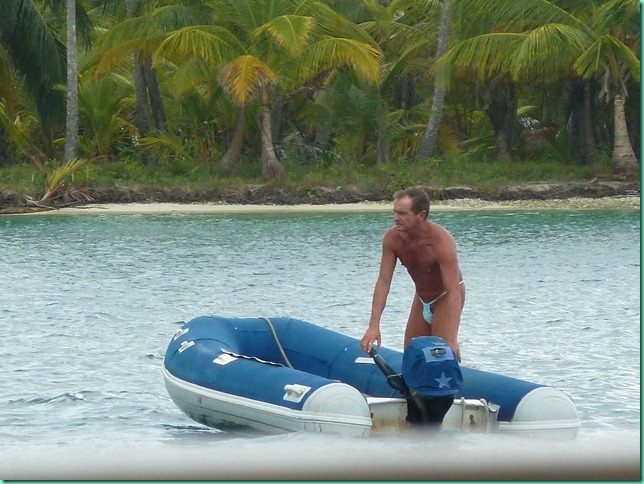If, like me, you didn’t quite know where Bocas del Toro was, you’d soon find out. According to the SSB radio realm of the Southwest Caribbean Net, Bocas is the West pole of the universe, Cartagena being the East, and the San Blas starring as the Shangri La of the tropics. Where is Bocas and why are so many people going there?
Eyes top left!
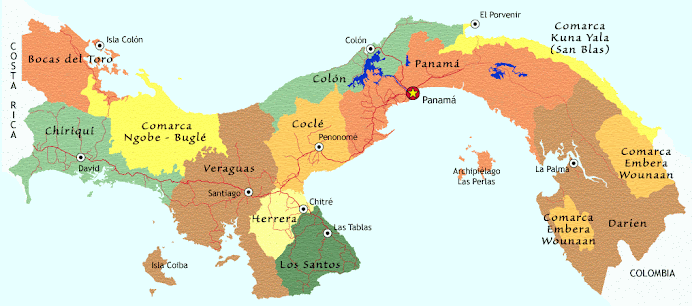
Map copied from the blog peaceinpanama.blogspot.com, by a Peace Corps volunteer in the Bocas area, nice-sounding woman, as I find generally of Peace Corps workers, and worth a look.
this map courtesy of escapethatcube.com. If this were a chart, you would see that the water depths are surprisingly inconsistent; the water is often clear, but the bottom holds many surprising contours.
Bocas del Toro is the indented bay and its half-dozen neighboring big islands at the far western end of Caribbean Panama, abutting the border to Costa Rica. The Bocas del Toro province itself extends halfway to the Pacific; the mountainous interior is populated, if at all, largely by Ngobe Indians in an often subsistence condition. Bananas are the primary export of the coastal mainland part of the province. Once they were the economic mainstay of the islands too, but diseases crashed the crop years ago and nowadays the economy is mainly tourist-based. C. Columbus was here on his fourth and final trip and named a few more things. Bocas del Toro lies 130 miles mas o minus, from the Rio Chagres, basically due west.
Bocas the Town is on Isla Colon. The mainland hub, such as it is, of these islands, is Almirante, a twenty-minute lancha ride away. A car ferry like you’d see in the Outer Banks of North Carolina also arrives every morning laden with delivery trucks which do their business then depart every afternoon.
There’s another town, Chiriqui Grande, in the next bay south, and you could also arrive in Almirante by bus from the Costa Rica border at Changuinola. Otherwise, there are a few planes from Panama City which land at the Bocas airport, just a short stroll from the waterfront. The other islands are accessible only by water taxi, lancha or private boat. 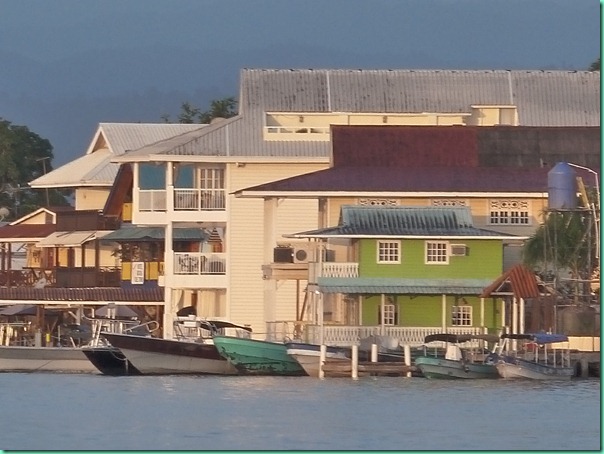
So, what’s this place all about? To me it looks like Bocas del Toro is Shorthand for: don’t worry about hurricanes, or, really, any weather beyond rain. Be a gringo in the bosom of your tribe. Eat in restaurants! Drink wine and eat fresh vegetables every day! Wash your clothes in automatic washing machines! Ride a bicycle if you’d care to! Test your powers against the persistence of mildew and no-see-ums. Plug into shore power if that’s your wish. Get on an airplane connecting to anywhere! Watch the rest of the careworn world from a respectable distance.
PHOTO HARBOR VIEW OF COASTAL MOUNTAINS
Many of the turistas are backpackers, big hairy guys and tiny little girls both laboring under the same-sized packs.
Surfers come here – not too many in this rainy season (US summer but the Panamanians call it invierno winter) when the trade-wind generated waves don’t pile up on the reefs and beaches so much. But it’s fun to read the surfer descriptions of the area. Apparently you need to be ‘confident’ because a couple of the best breaks end on top of a reef which I’m sure could scrape you up pretty badly.Bocas Del Toro Surfing – Isla Colon – BLuff and Paunch
Bocas is the kind of town where the main street contains more pedestrians and cyclists than cars and you can easily stroll the six or seven blocks of its length down either lane of the street, without dodging anything but a backpacker, bicycle or chat group. The bikes are generally fat-tired ‘beach’ bikes – we always think of them as luxury rides compared to our little boat bikes.
But we did get those out for a few rambles, including one up and down and up and down across the middle of Isla Colon. There it’s sometimes lush and untouched, and in other places cleared for cattle, pretty in a rolling Pennsylvania Dutch kind of way, minus the barns. Signage indicates something in the law permitting ‘reforestation projects’, one of which might be the increasingly-popular teak tree plantation we saw.http://www.panama-guide.com/article.php/20041121094452818
PHOTO BIG TREE HANGING VINES
Yachts have been coming here in ever -increasing numbers – but as we’ve found in the Rio Dulce, Guatemala and other places, often the boats are parked and empty while the owners have flown back to Europe or the US for a few months. There are three marinas in the Bocas area, and rumors are flying about a soon-to-be-contructed haulout facility in Almirante. This, if true, would really change the cruising equation; the nearest haulout otherwise is back in Colon at Shelter Bay, with a reputation of being pricey and prickly in some of its policies. The other alternative, Cartagena, is hundreds of up-wind miles away.
Bocas has a number of old houses converted to hostels, and a handful of modern ones too, lots of bars and restaurants, a surprising number of Chinese-owned grocery stores. You can buy computer parts at the pharmacy, and motor oil at almost any grocery.You can get a massage, a tattoo and who knows what else where else. To my mind, if the cornucopia that is Chow Kai Ferreteria doesn’t have it, I don’t need it!
PHOTO WATER TAXIS
Being a tourist town, and a group of islands, prices are a little higher than other places in Panama. The locals who profit from the present invasion are probably pleased by increasing ‘gentrification’ but in the background, or sometimes right next door, is a basically rural, undereducated, poor indigenous population who might not do so well.
PHOTO
The slow global economy may be delaying development just now but in the meantime the Panamanian government is actively encouraging US and European investors to settle in Panama if they have a certain monthly income or other resources. I’ve been told it is an effort to replace some of the ‘economic stimulus’ that disappeared when the US population of the Canal Zone left twenty years ago. And the newcomers are not all old people either – we’ve met a few young couples living in Bocas and Boquete (inland, another post)who work via the Internet, or start restaurants and other small businesses.
One hotel displays photos from over a century ago, when the Bocas area was prime banana growing territory. Every time I see old photos like this, I wonder where the trees are.
PHOTO OLD BOCAS FRUIT CO HQ
The bulk of banana plantation activity has moved to the mainland, but Bocas town still has a few of the older buildings, despite fire, storm, earthquake and development, including some charming raised up wooden cottages with porches and gingerbread, now often serving as backpacker hostels.
PHOTO OLD WOODEN HOUSE
The surrounding islands have varied personalities. Solarte seems to attract the jungle-loving new arrivals. Bastiamento, has a small town, Old Bank, the newest marina, Red Frog, a good surfing beach, and a national park. We had a great hike out there one day (another post). Others have jungle, some specialized production, like gourmet chocolate (I’m practically addicted to one of the locally manufactured brands), or have been substantially cleared for low level cattle production.
All in all, until the great tourist boom comes, it’s active but not frantic around here, at least not in the rainy season.
If you’re reading between the lines, you might discern that I sort of like it, and I sort of don’t. We look at the number of gringos in their new ‘tropical estates’ with a mix of emotions. How can they commit to this? The bottom line, for those we’ve been able to ask, is that their money goes farther here, they think. But I keep wondering: How can they build a wooden house on a low-lying island, often cheek by jowl with some other self-important ex-pat, or next to a poor native village, in a country where they don’t speak the language and don’t understand the work ethic, where they often don’t have much nice to say about the people, even if the hurricanes don’t come here and the internet service can be good?
Of course, there is way more to Bocas del Toro than the little I’ve stumbled through here. We, as usual, have more questions than answers out here in our floating palace.
Clearly, there are advantages to Panama, particularly for the investor (tax concessions and relatively low, although rising, prices),and the retiree: ( ‘third age’ discounts, less expensive decent-quality medical care). A stable government and a semi-Westernized culture familiar with US methods and products from generations of American presence in the Canal Zone works for everyone. There’s a lot to like, but is it all that nice? It would be easy to get stuck here, on a lee shore, at the far downwind end of the Caribbean.


